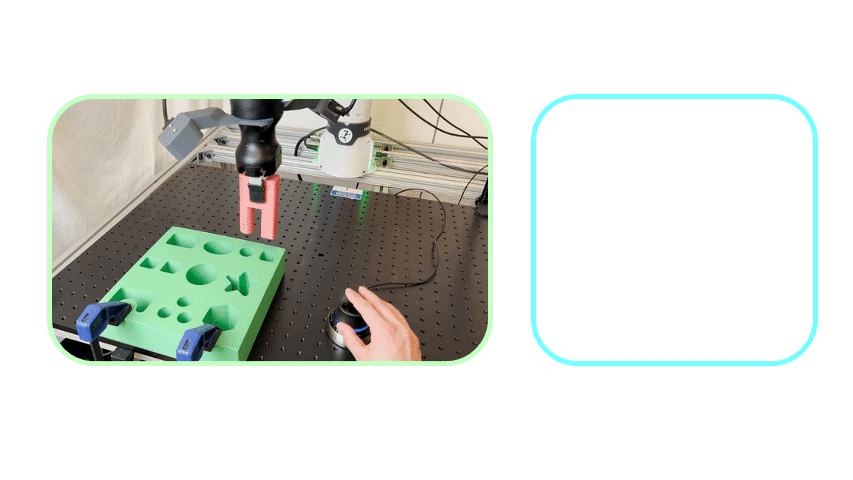Researchers at UC Berkeley Introduced RLIF: A Reinforcement Learning Method that Learns from Interventions in a Setting that Closely Resembles Interactive Imitation Learning
Researchers from UC Berkeley introduce an unexplored approach to learning-based control problems, integrating reinforcement learning (RL) with user intervention signals. Utilizing off-policy RL on DAgger-style interventions, where human corrections guide the learning process, the proposed method performs superior on high-dimensional continuous control benchmarks and real-world robotic manipulation tasks. They provide:
- Theoretical justification and a unified framework for analysis.
- Demonstrating the method’s effectiveness, particularly with suboptimal experts.
- Offering insights into sample complexity and suboptimal gap.
The study discusses the acquisition of skills in robotics and compares interactive imitation learning with RL methods. The study introduces RLIF (Reinforcement Learning via Intervention Feedback), which combines off-policy RL with user intervention signals as rewards to offer improved learning from suboptimal human interventions. The study provides a theoretical analysis, quantifying the suboptimality gap and discussing the impact of intervention strategies on empirical performance in control problems and robotic tasks.
The research addresses limitations in naive behavioral cloning and interactive imitation learning by proposing RLIF, which combines RL with user intervention signals as rewards. Unlike DAgger, RLIF doesn’t assume near-optimal expert interventions, enabling the policy to improve the expert’s performance and potentially avoid interventions. The theoretical analysis includes the suboptimality gap and non-asymptotic sample complexity.
The RLIF method is a type of RL that aims to improve suboptimal human expert performance by utilizing user intervention signals as rewards. It minimizes interventions and maximizes reward signals obtained from Dagger-style corrections. The method has undergone theoretical analysis, including asymptotic suboptimal gap analysis and non-asymptotic sample complexity bounds. Evaluations on various control tasks, such as robotic manipulation, have shown RLIF’s superiority over DAgger-like approaches, particularly with suboptimal experts, while considering different intervention strategies.
RLIF has demonstrated superior performance in high-dimensional continuous control simulations and real-world robotic manipulation tasks compared to DAgger-like methods, particularly with suboptimal experts. It consistently outperforms HG-DAgger and DAgger at all levels of expertise. RLIF utilizes RL and user intervention signals to improve policies without assuming optimal specialist actions. The suboptimality gap and non-asymptotic sample complexity are covered in the theoretical analysis. Various intervention strategies have been explored, showing good performance with different selection approaches.
To conclude, RLIF proves to be a highly effective machine learning method that outperforms other approaches like DAgger in continuous control tasks, particularly when dealing with suboptimal experts. Its theoretical analysis covers the suboptimality gap and non-asymptotic sample complexity, and it explores various intervention strategies while showing good performance with different selection approaches. The great advantage of RLIF is that it provides a practical and accessible alternative to full RL methods by relaxing the assumption of near-optimal experts and improving over suboptimal human interventions.
Future work should address the safety challenges of deploying policies under expert oversight with online exploration. Enhancing RLIF could involve further investigation of intervention strategies. Evaluating RLIF in diverse domains beyond control tasks would reveal its generalizability. Extending theoretical analysis to include additional metrics and comparing RLIF to other methods would deepen understanding. Exploring combinations with techniques like specifying high-reward states by a human user could enhance RLIF’s performance and applicability.
Check out the Paper and Project. All credit for this research goes to the researchers of this project. Also, don’t forget to join our 33k+ ML SubReddit, 41k+ Facebook Community, Discord Channel, and Email Newsletter, where we share the latest AI research news, cool AI projects, and more.
If you like our work, you will love our newsletter..
![]()
Hello, My name is Adnan Hassan. I am a consulting intern at Marktechpost and soon to be a management trainee at American Express. I am currently pursuing a dual degree at the Indian Institute of Technology, Kharagpur. I am passionate about technology and want to create new products that make a difference.
Credit: Source link


Comments are closed.